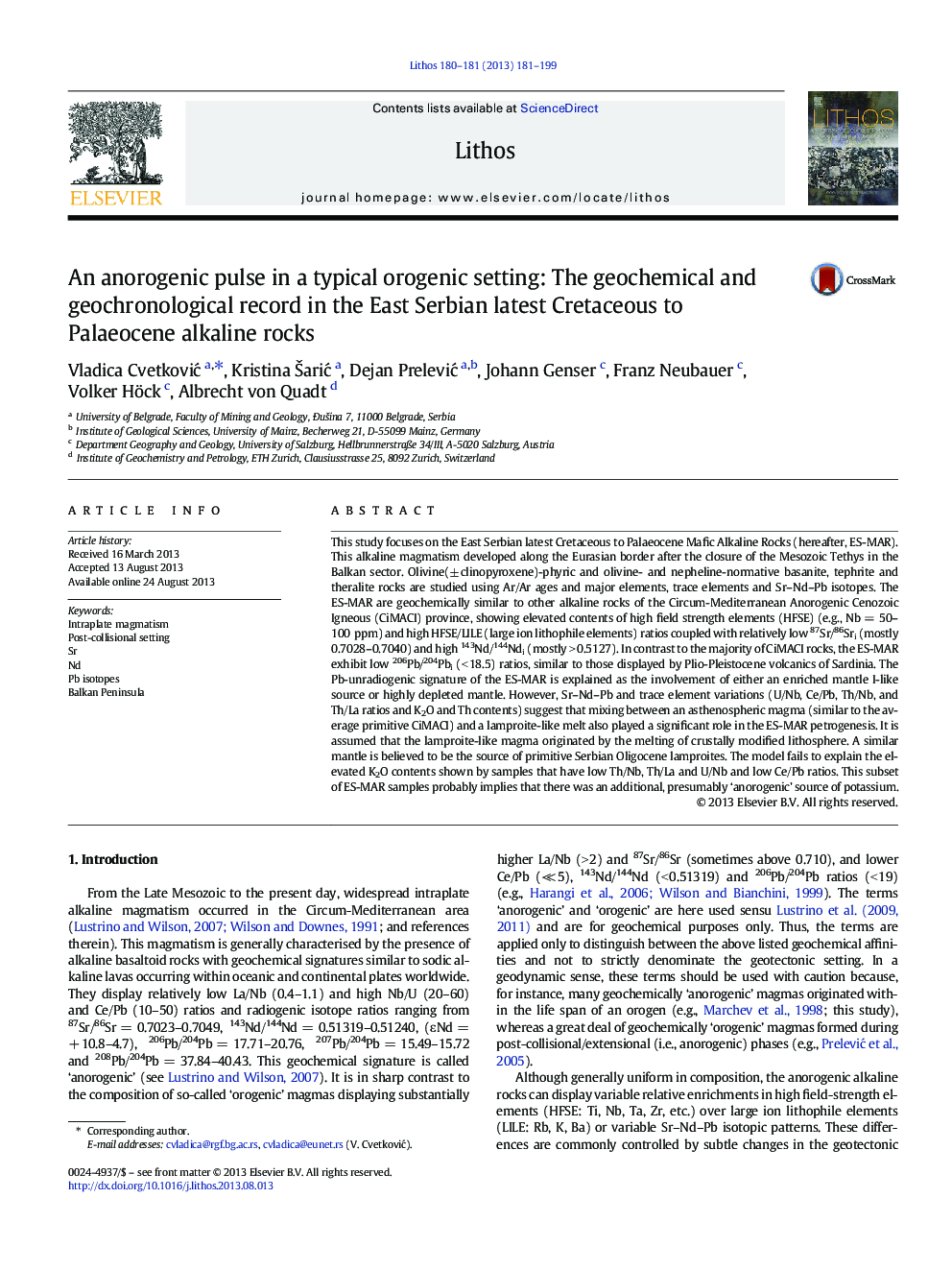| کد مقاله | کد نشریه | سال انتشار | مقاله انگلیسی | نسخه تمام متن |
|---|---|---|---|---|
| 4716164 | 1638685 | 2013 | 19 صفحه PDF | دانلود رایگان |
• The origin of one of the oldest Cenozoic alkaline provinces in Europe is explained.
• Low 206Pb/204Pb values in typically ‘anorogenic’ magmas: Evidence of EMI-like or depleted mantle?
• Source mixing between asthenospheric magma and lithospheric-derived lamproite-like melts
• Two sources of potassium in sodic alkaline melts
This study focuses on the East Serbian latest Cretaceous to Palaeocene Mafic Alkaline Rocks (hereafter, ES-MAR). This alkaline magmatism developed along the Eurasian border after the closure of the Mesozoic Tethys in the Balkan sector. Olivine(± clinopyroxene)-phyric and olivine- and nepheline-normative basanite, tephrite and theralite rocks are studied using Ar/Ar ages and major elements, trace elements and Sr–Nd–Pb isotopes. The ES-MAR are geochemically similar to other alkaline rocks of the Circum-Mediterranean Anorogenic Cenozoic Igneous (CiMACI) province, showing elevated contents of high field strength elements (HFSE) (e.g., Nb = 50–100 ppm) and high HFSE/LILE (large ion lithophile elements) ratios coupled with relatively low 87Sr/86Sri (mostly 0.7028–0.7040) and high 143Nd/144Ndi (mostly > 0.5127). In contrast to the majority of CiMACI rocks, the ES-MAR exhibit low 206Pb/204Pbi (< 18.5) ratios, similar to those displayed by Plio-Pleistocene volcanics of Sardinia. The Pb-unradiogenic signature of the ES-MAR is explained as the involvement of either an enriched mantle I-like source or highly depleted mantle. However, Sr–Nd–Pb and trace element variations (U/Nb, Ce/Pb, Th/Nb, and Th/La ratios and K2O and Th contents) suggest that mixing between an asthenospheric magma (similar to the average primitive CiMACI) and a lamproite-like melt also played a significant role in the ES-MAR petrogenesis. It is assumed that the lamproite-like magma originated by the melting of crustally modified lithosphere. A similar mantle is believed to be the source of primitive Serbian Oligocene lamproites. The model fails to explain the elevated K2O contents shown by samples that have low Th/Nb, Th/La and U/Nb and low Ce/Pb ratios. This subset of ES-MAR samples probably implies that there was an additional, presumably ‘anorogenic’ source of potassium.
Journal: Lithos - Volumes 180–181, November 2013, Pages 181–199
